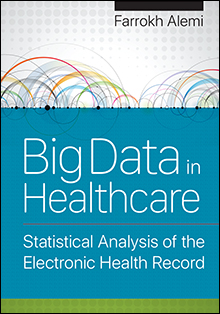
Decision Analysis for Healthcare Managers
Farrokh Alemi David H. Gustafson, PhD
- Print: $115.00
Book Description
Should we invest in a new electronic health record system? What public policy should we develop to tackle this health issue? What are the root causes for medical errors in our facility? Should our hospital merge with another organization?
This book will help you build the skills you need to answer complex management and policy questions.
The first part of the book explains the various analytical tools that simplify and accelerate decision making. Learn about tools that help you determine causes, evaluate choices, and forecast future events. For occasions when a group, rather than an individual, has to make a decision, you will also learn what tools can help you create group consensus.
The second half of the book shows you how to apply analytical tools to different healthcare situations, including comparing clinician performance, determining the causes for medical errors, analyzing the costs of programs, and determining the market for new services. Many practical examples walk you step-by-step through common decision-making scenarios.
Companion website enhances learning and clarifies concepts
Access a comprehensive companion website that includes additional tools for building decision-making skills.
At the companion website you can:
- Listen to narrated lectures of key points
- View students’ examples of rapid-analysis exercises
- Follow animated examples of how to use computer programs to conduct an analysis
- Link to websites that provide additional information, including access to software and online tools that aid decision analysis
- Download PowerPoint slides that highlight important concepts of each chapter
Instructor Resources: A sample syllabus, discussion questions with talking points, guidelines for evaluating rapid-analysis exercises, and a guide to using the book's companion website. To see a sample, click on the Instructor Resource sample tab above
Student Resources: A companion website features key points, student examples of rapid-analysis exercises, links to websites that provide additional information, and PowerPoint slides that highlight the important concepts of each chapter.

